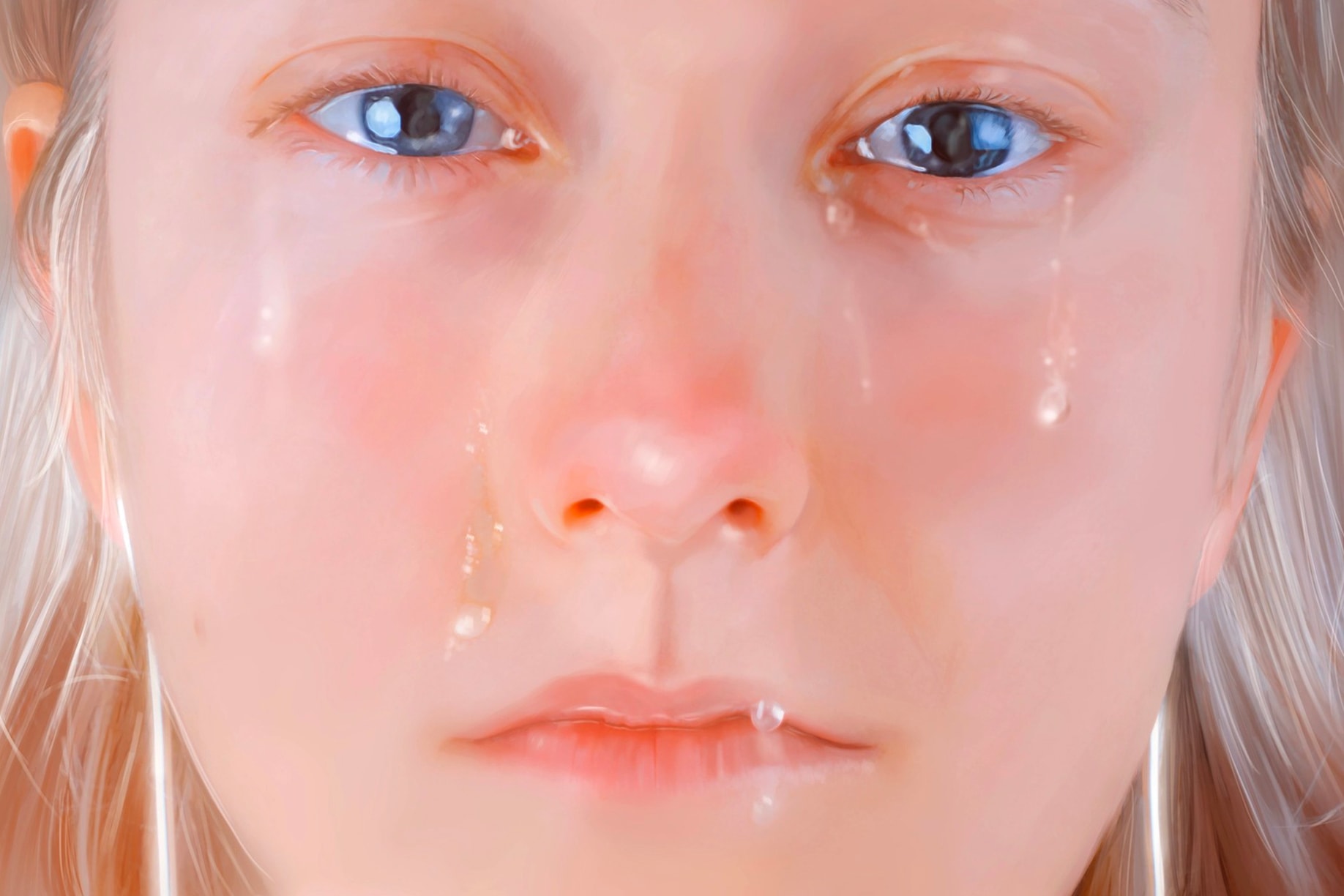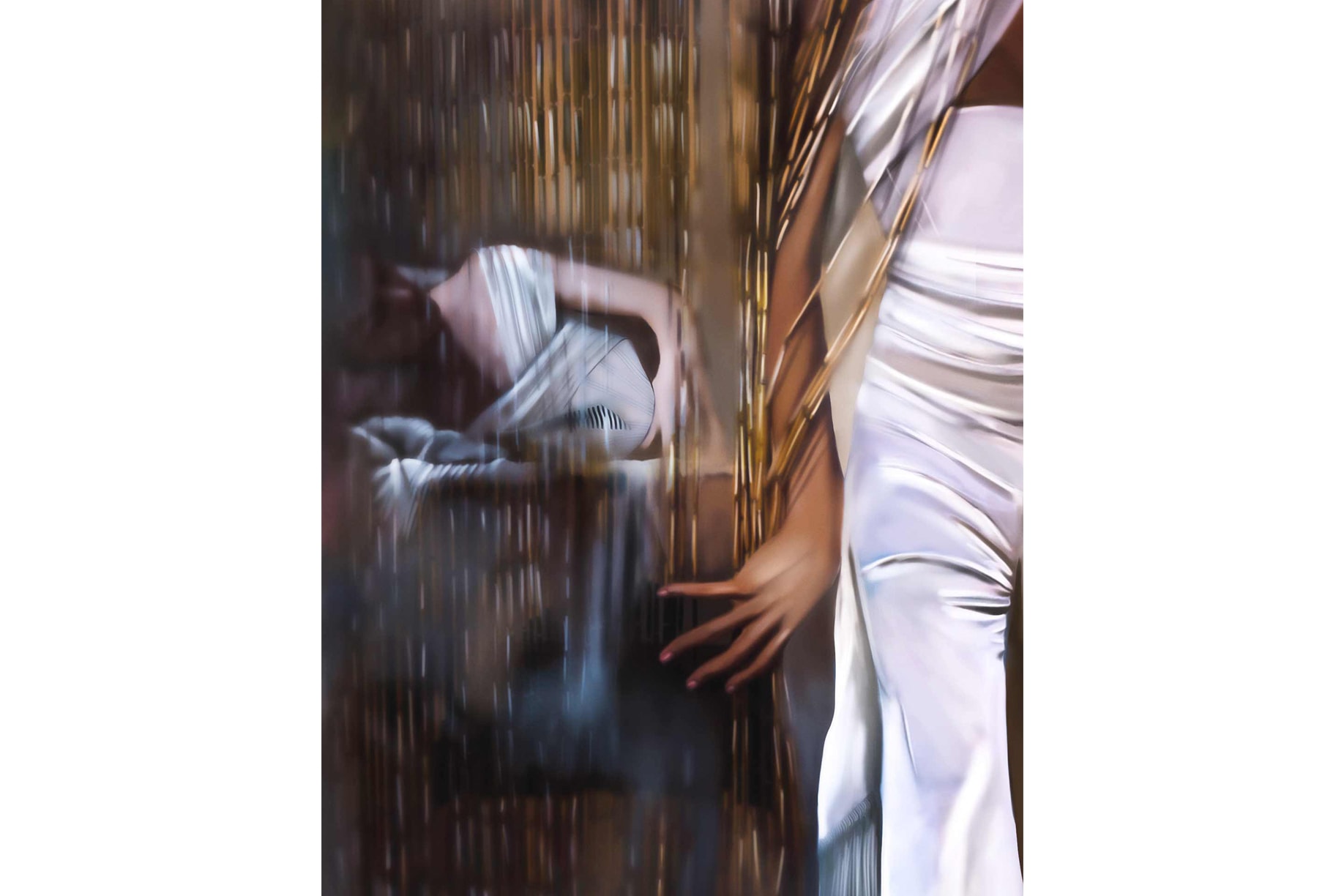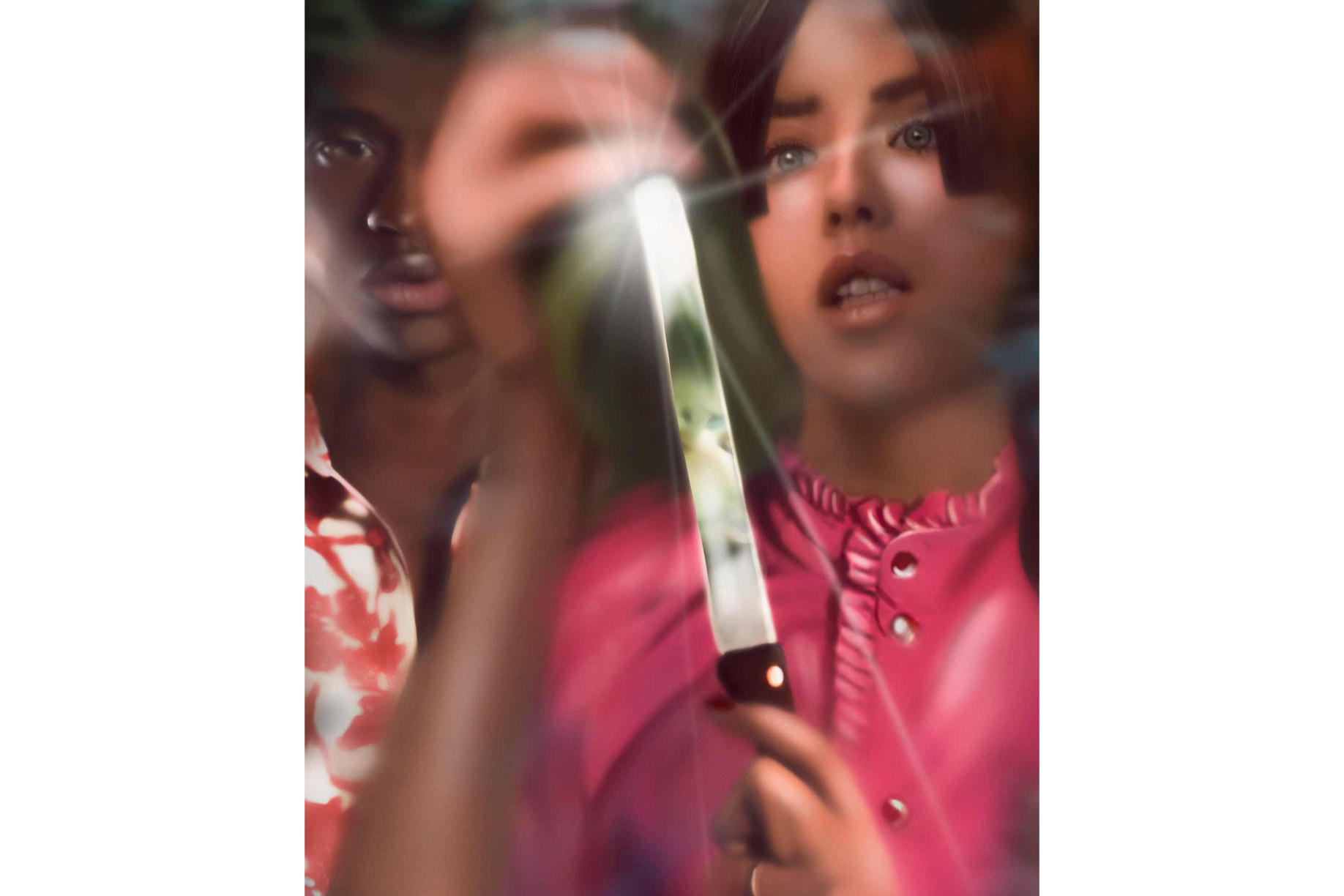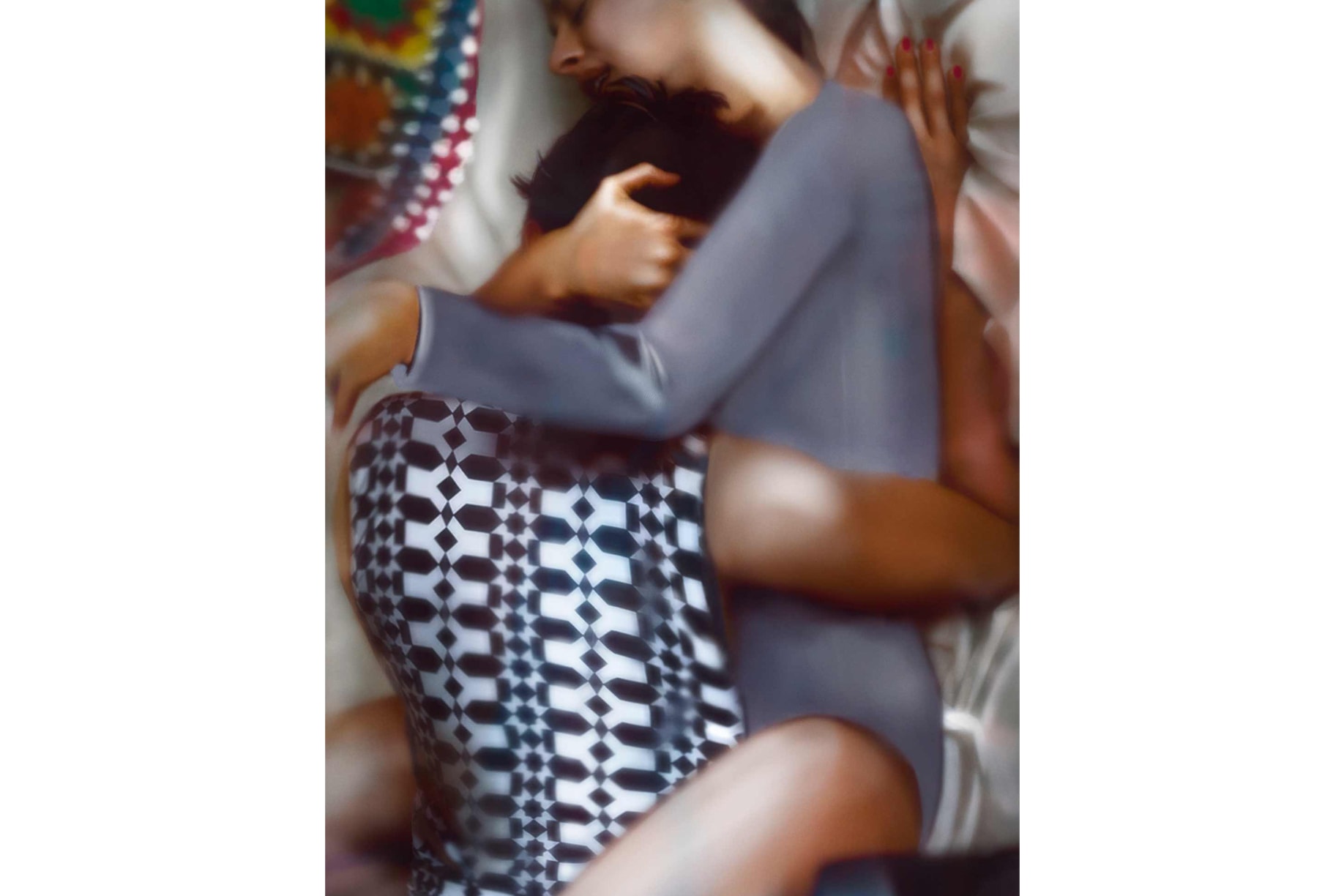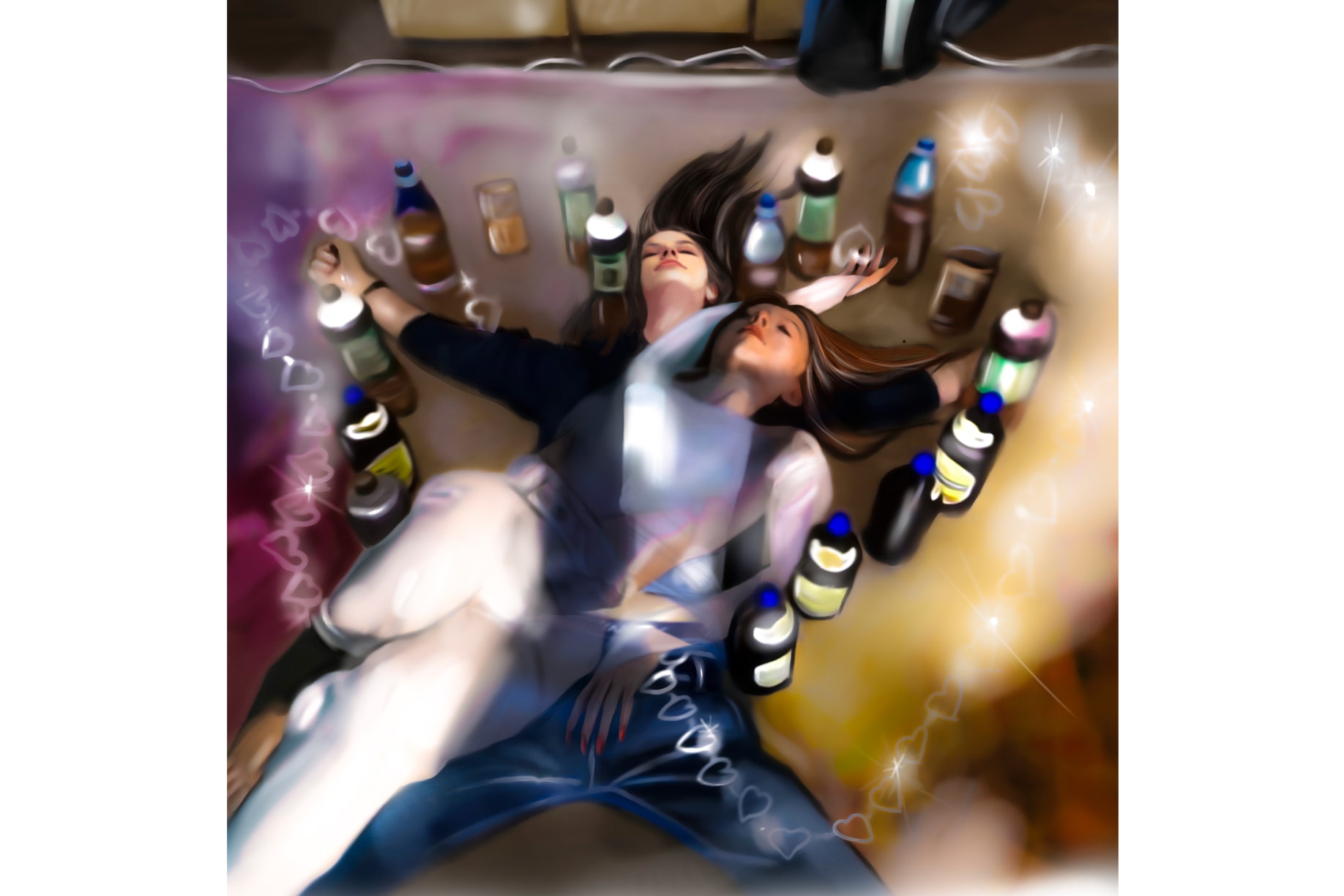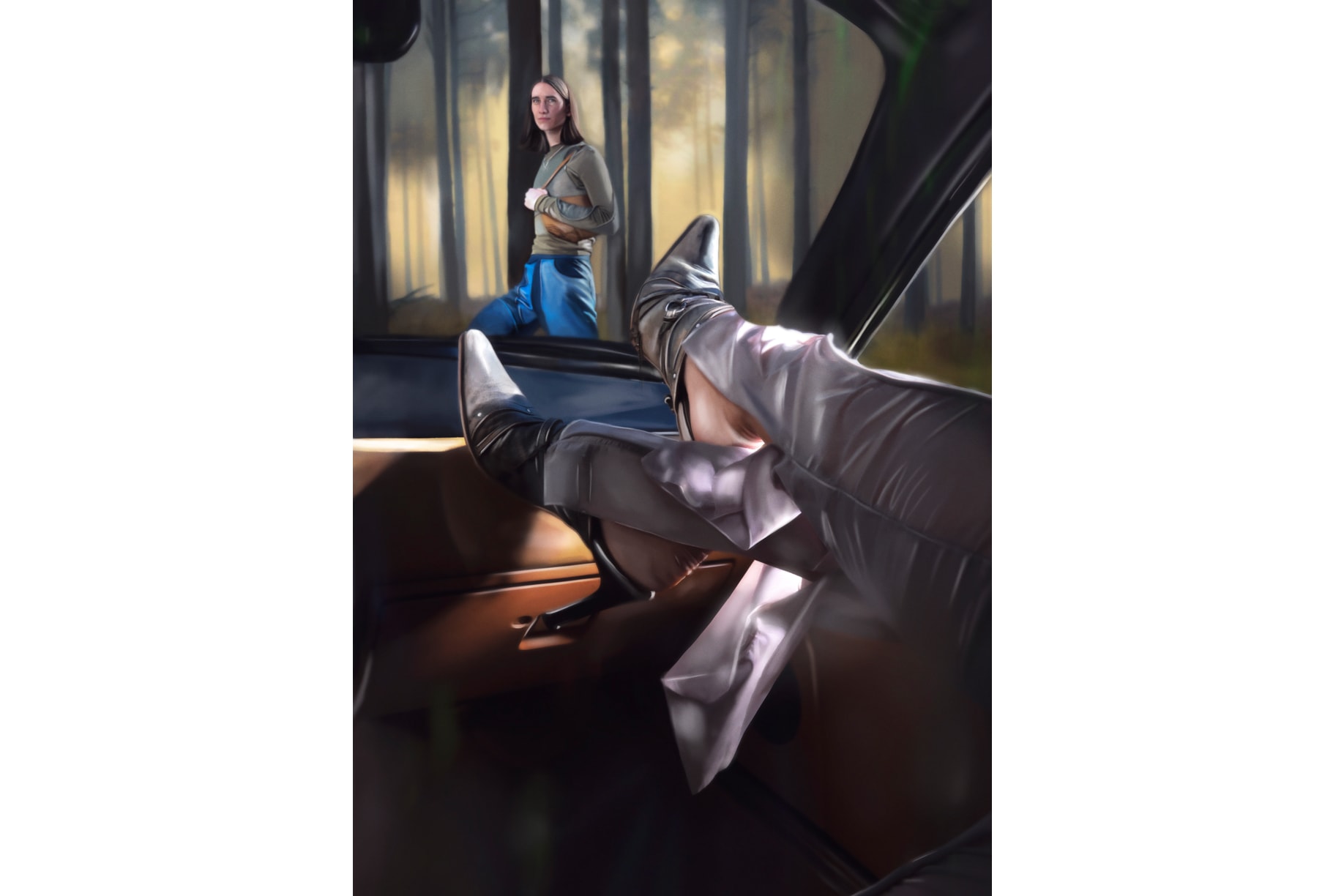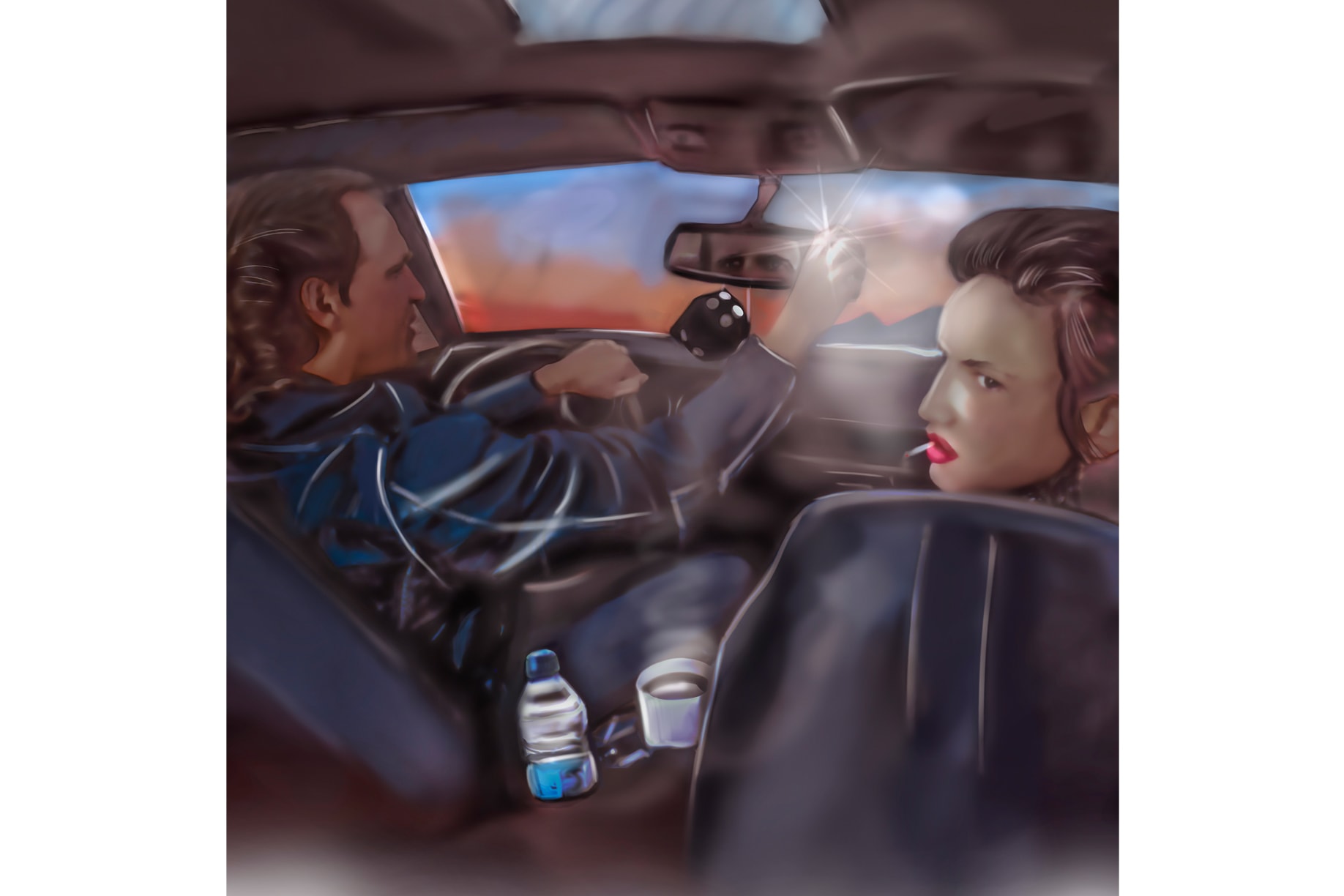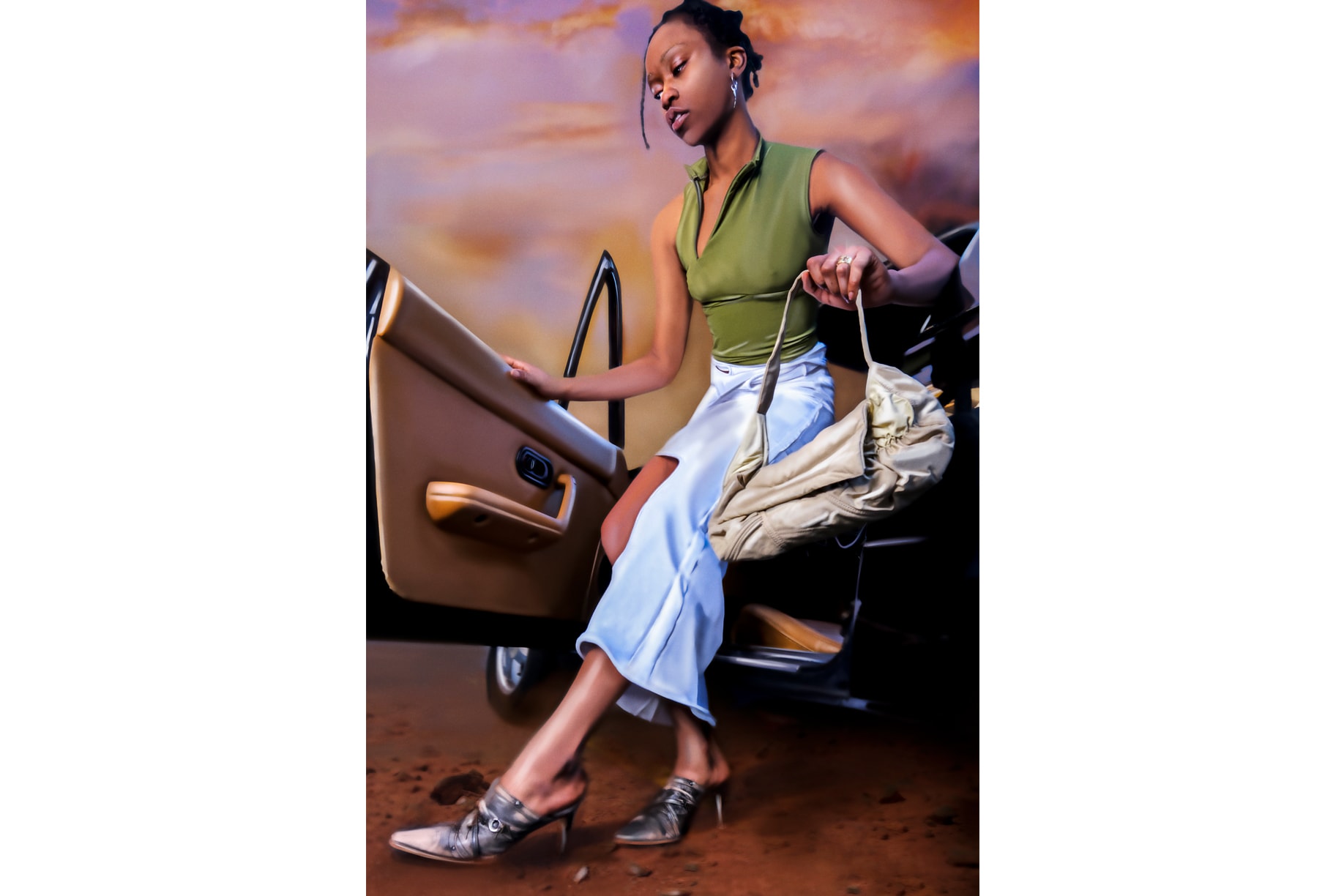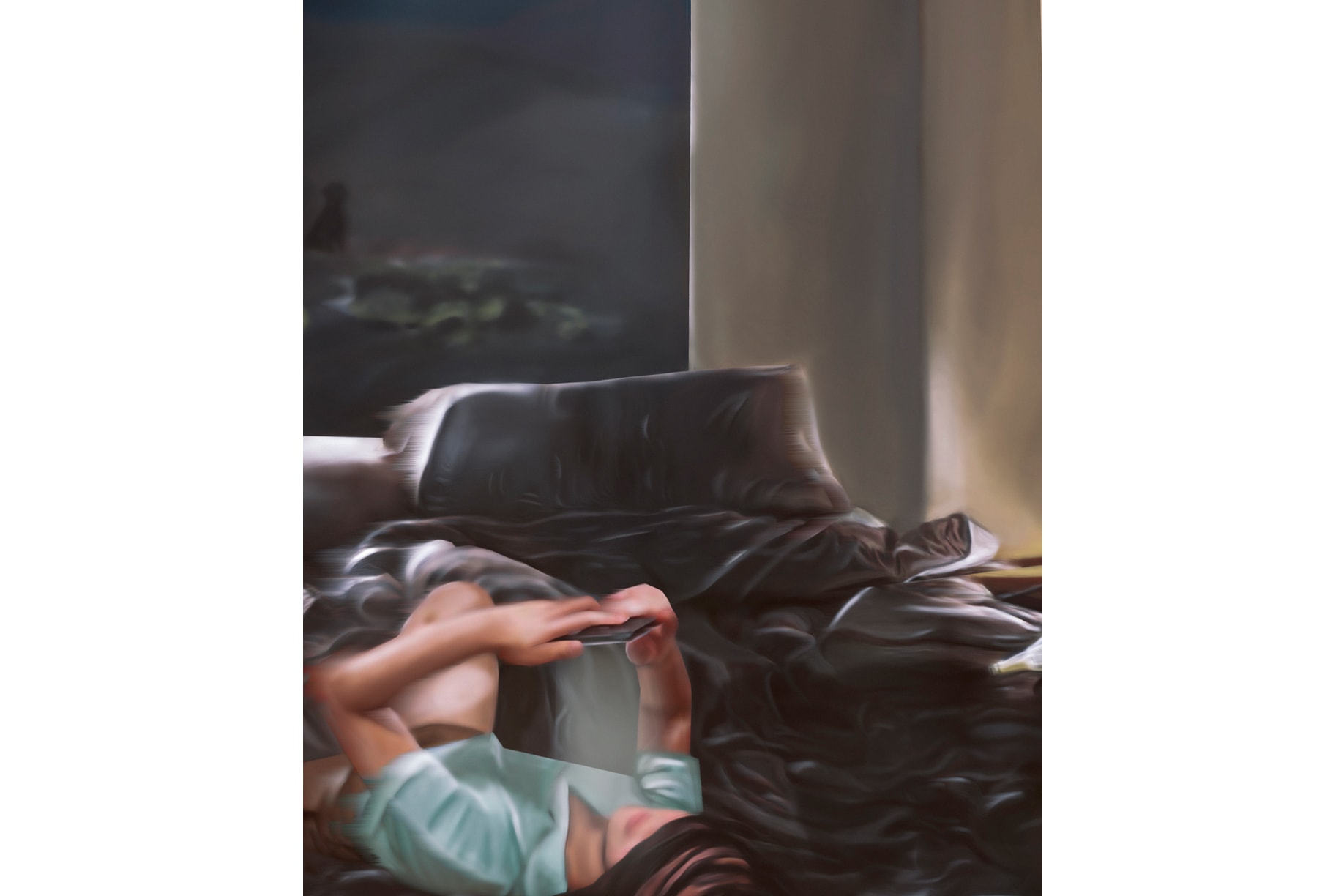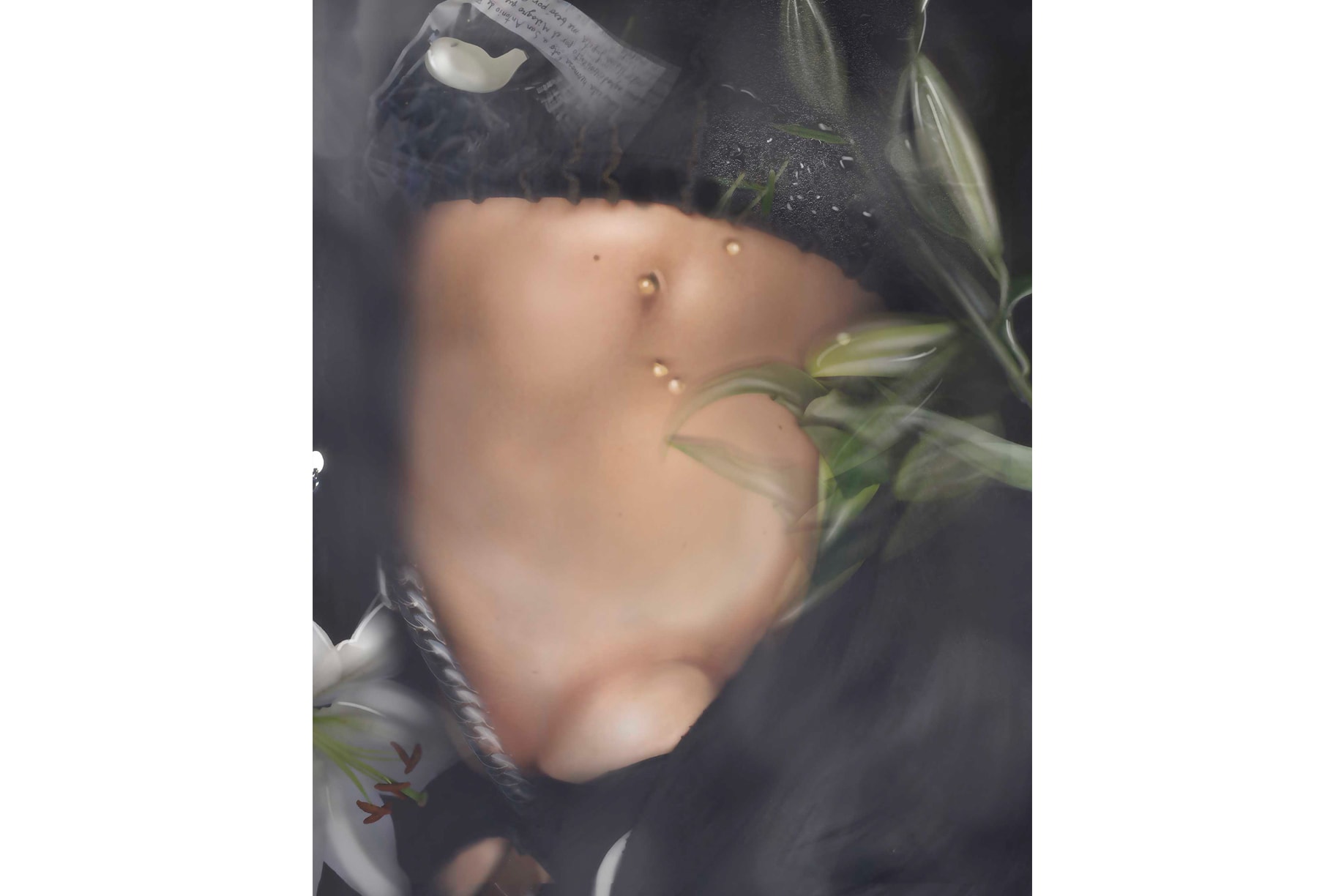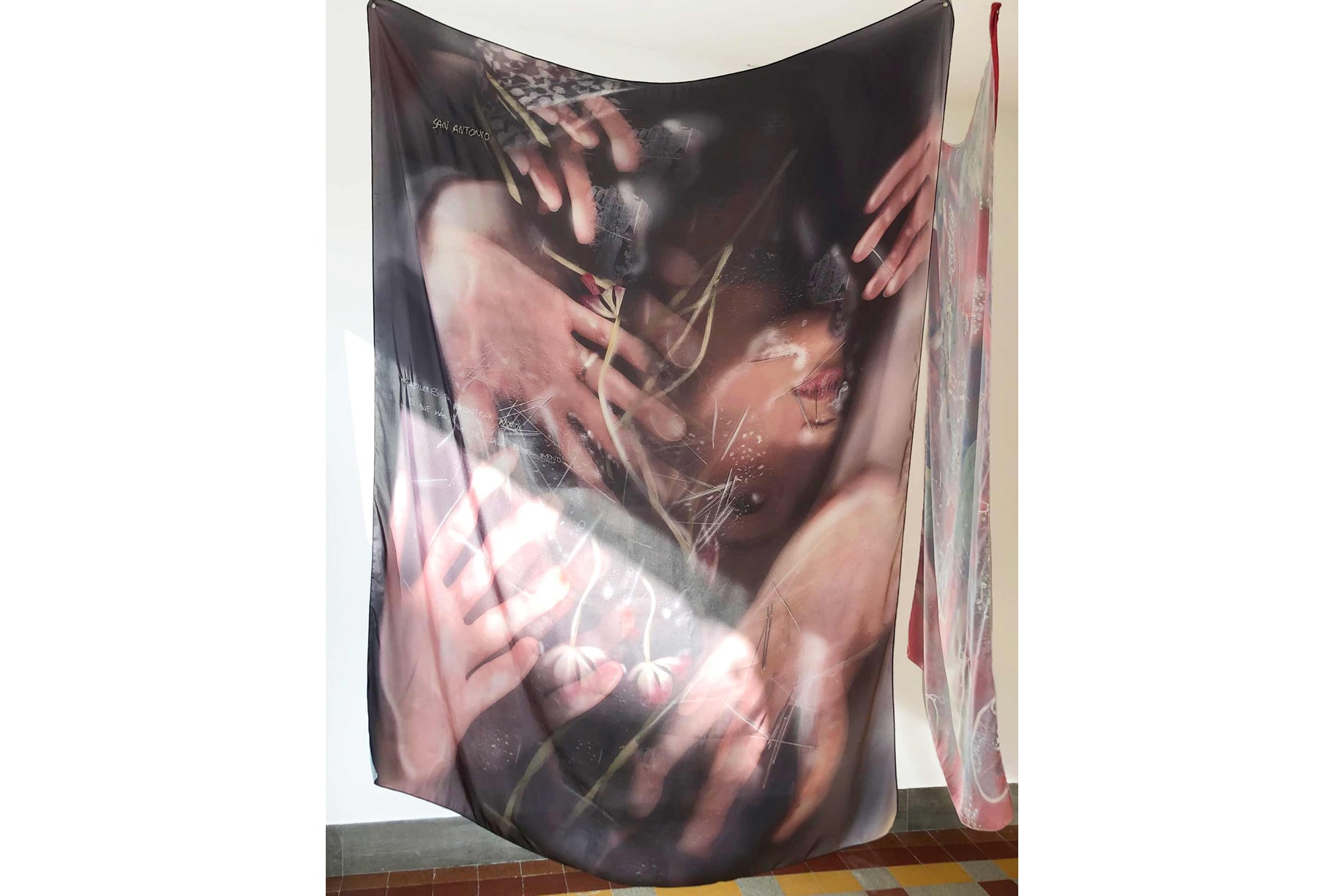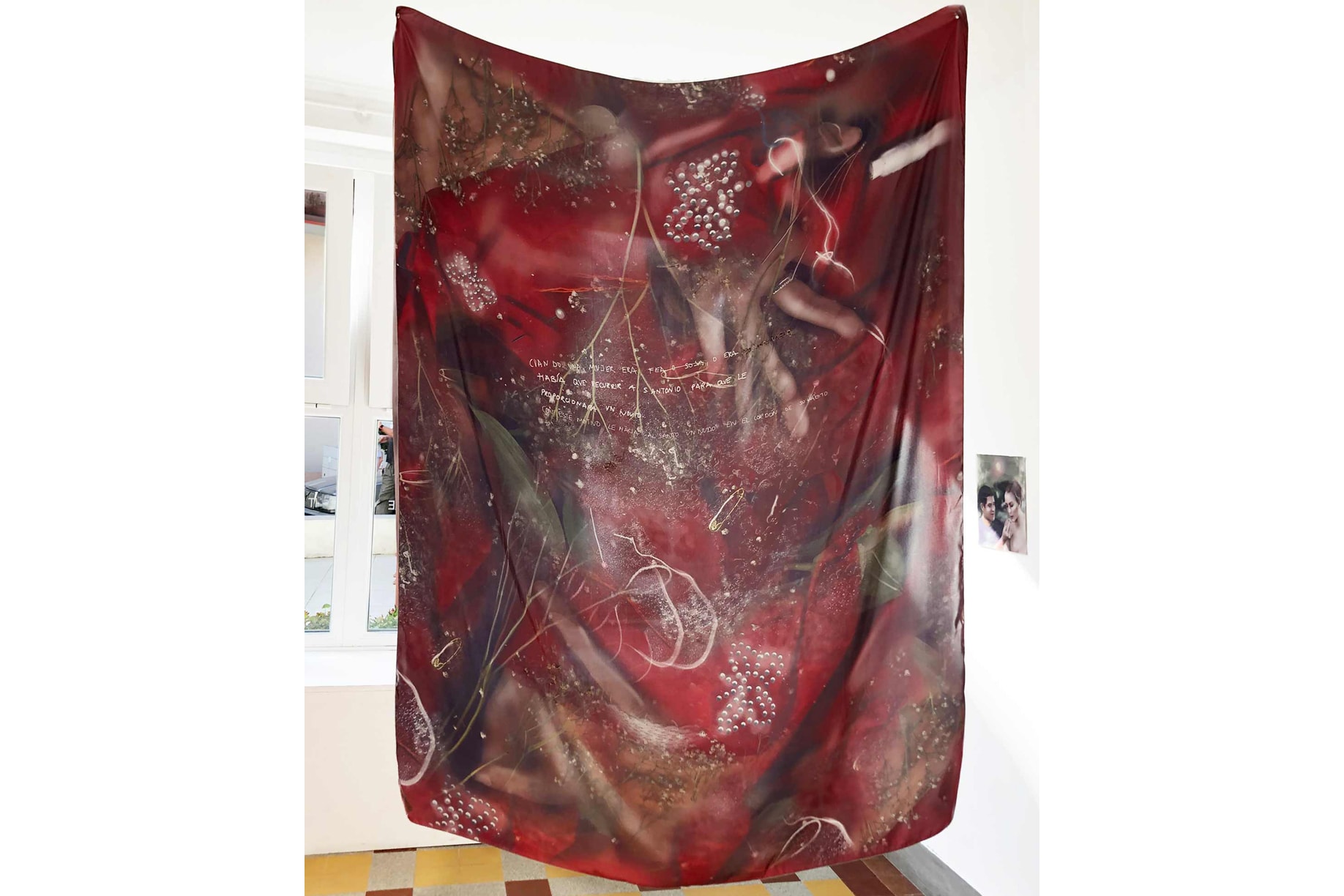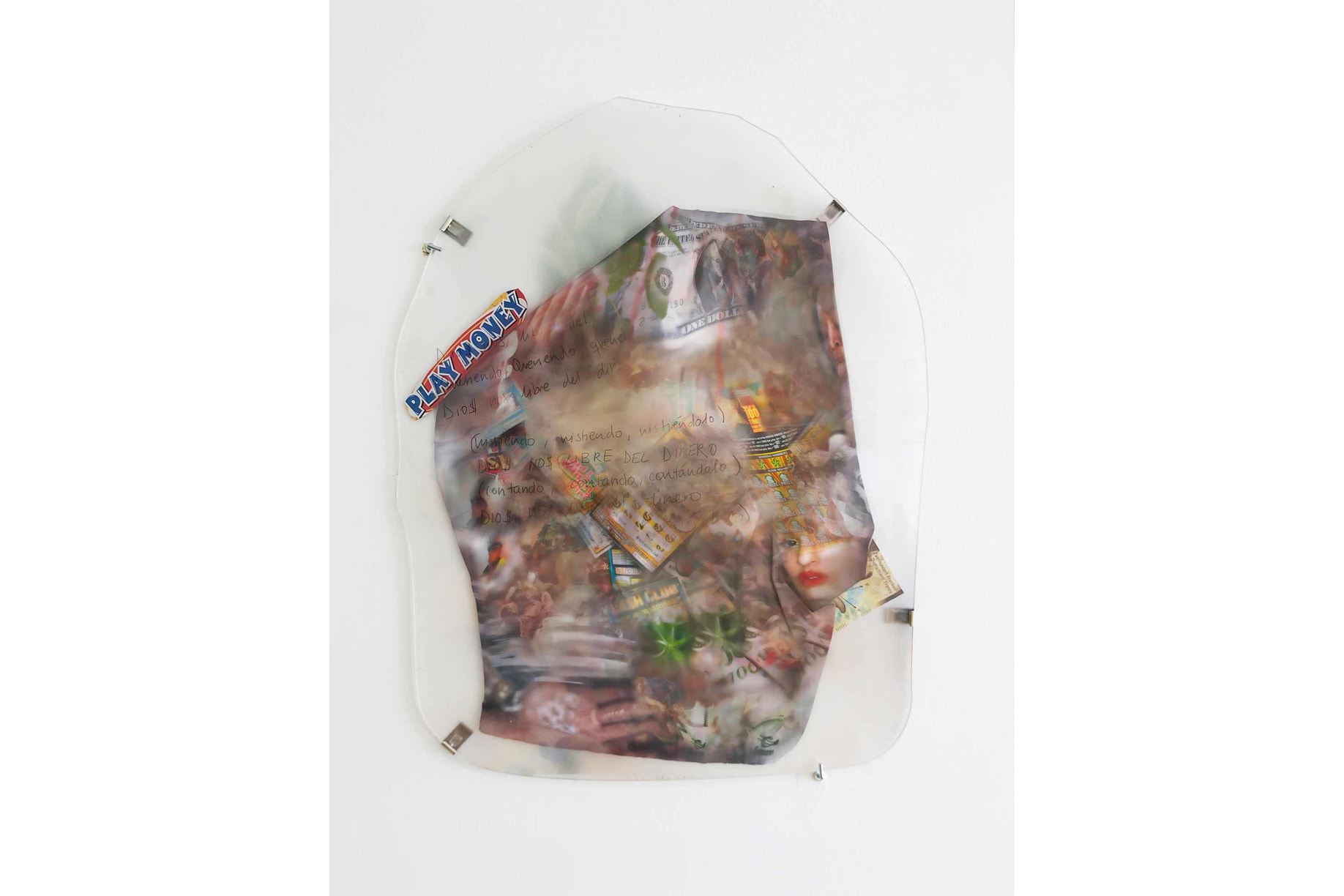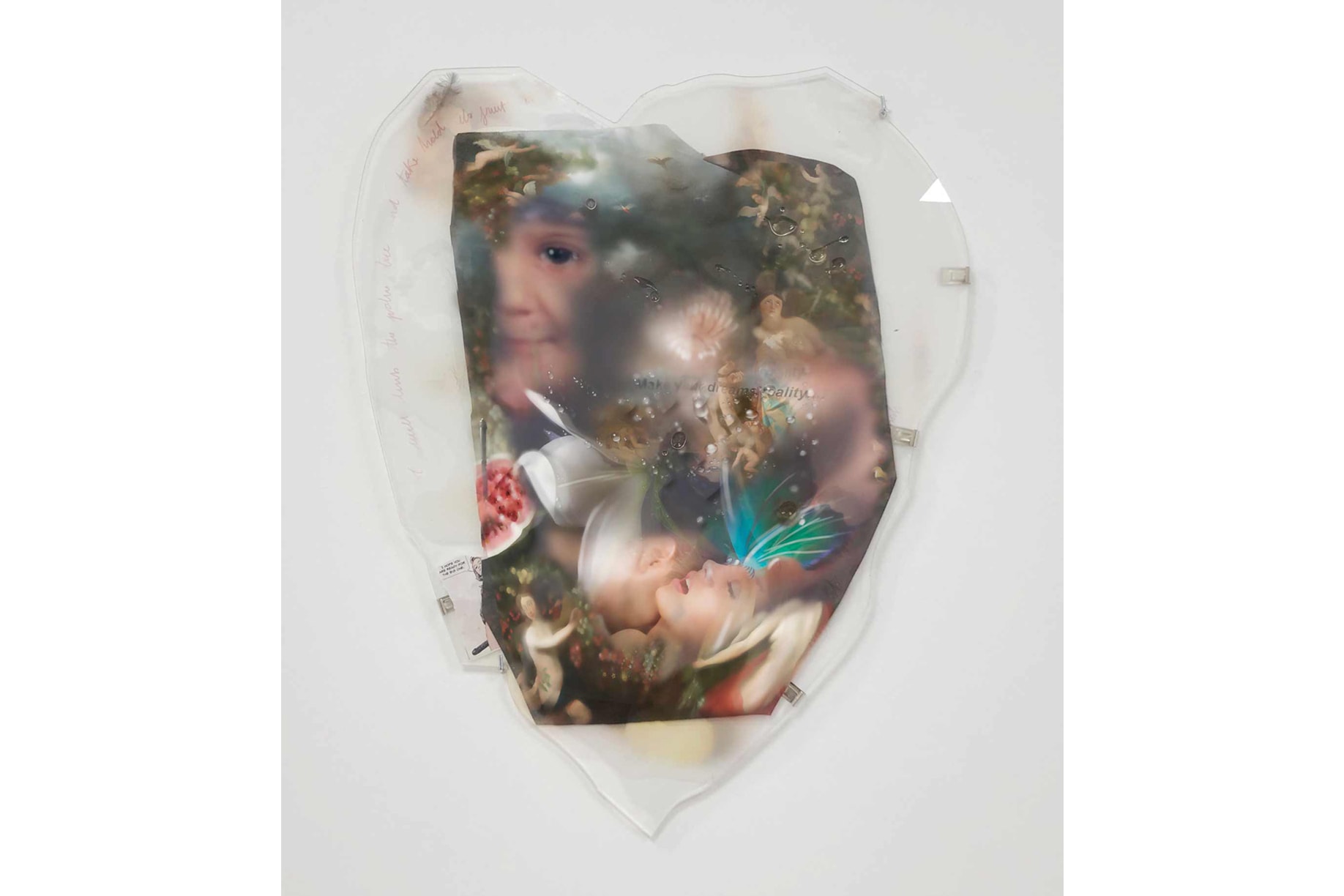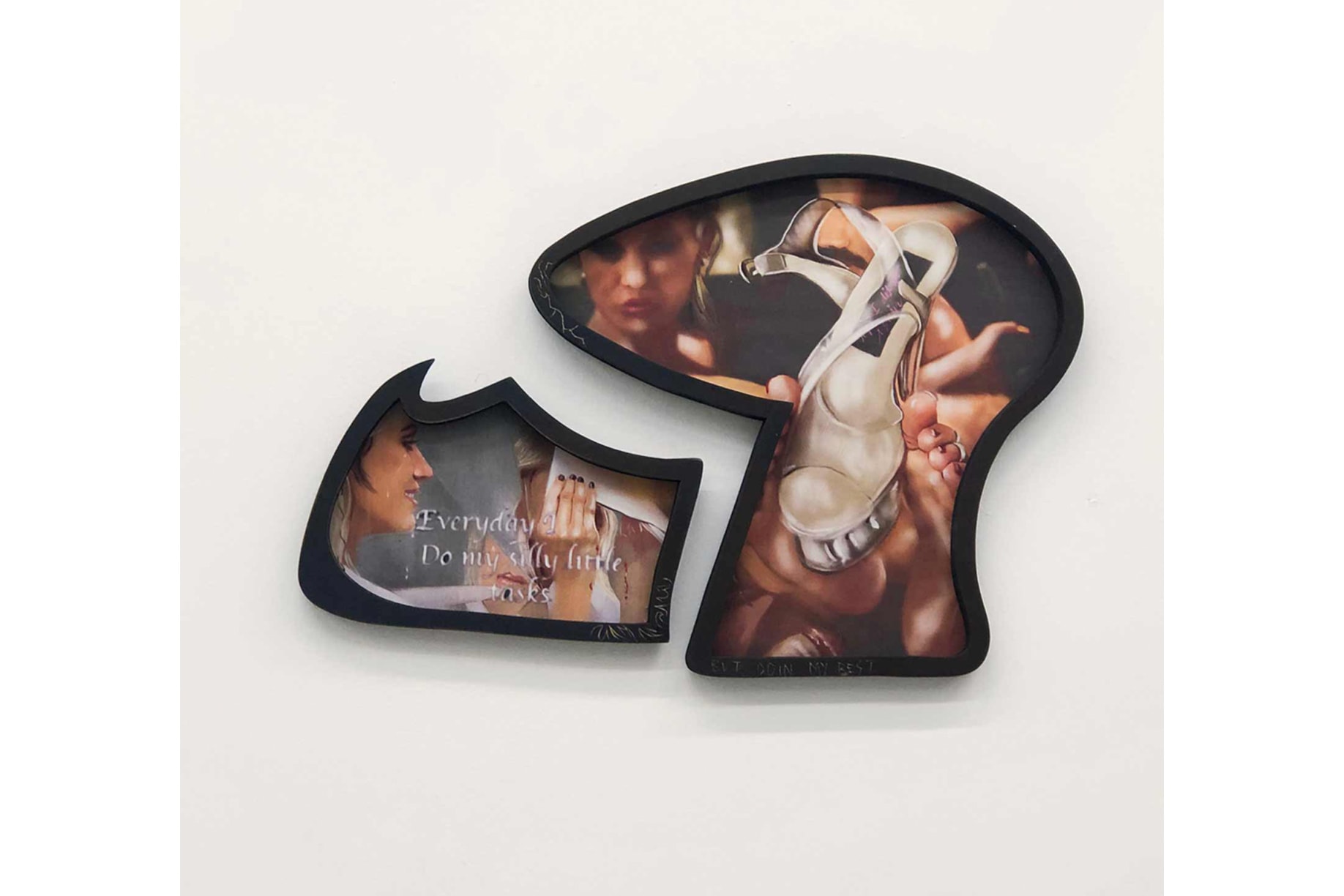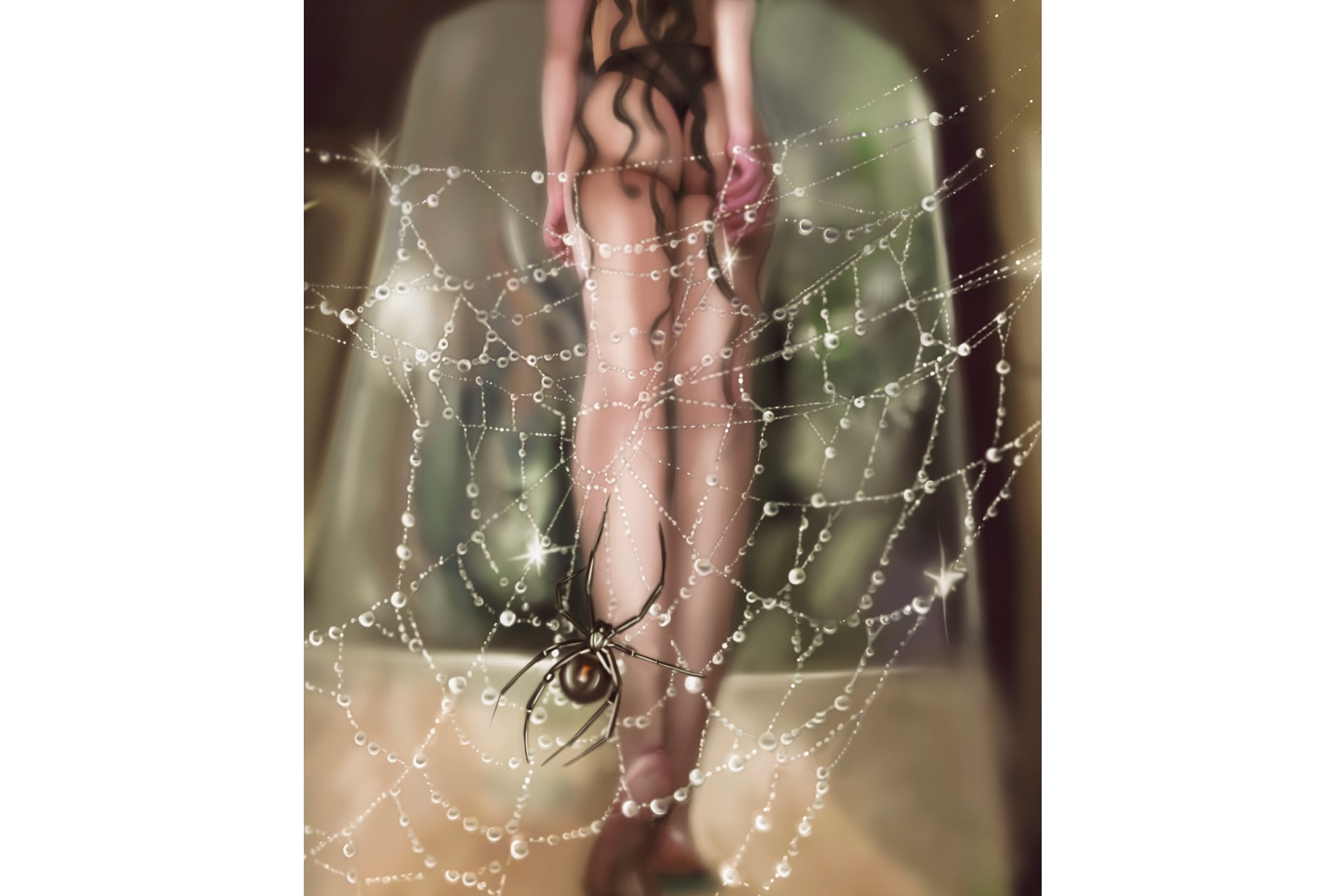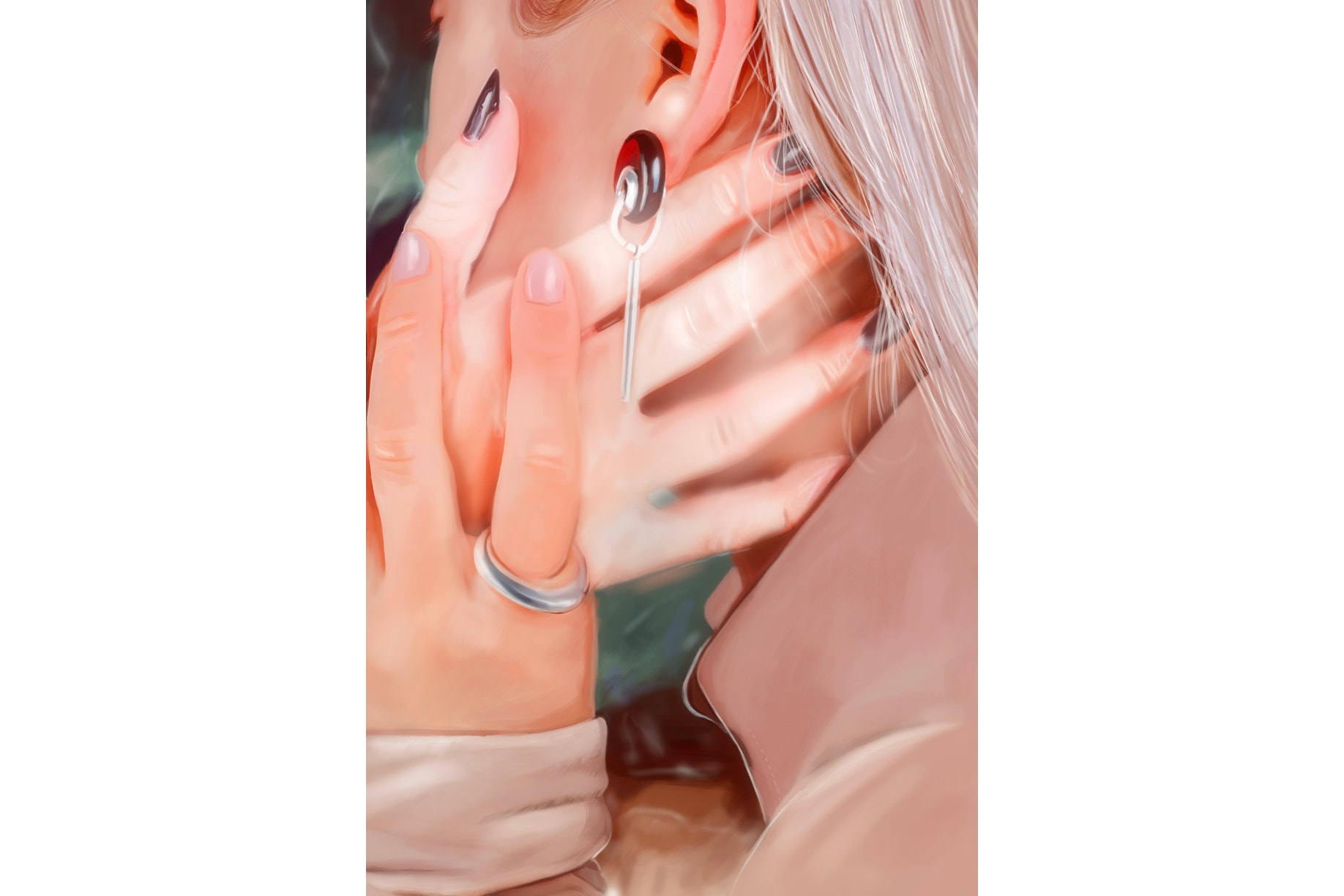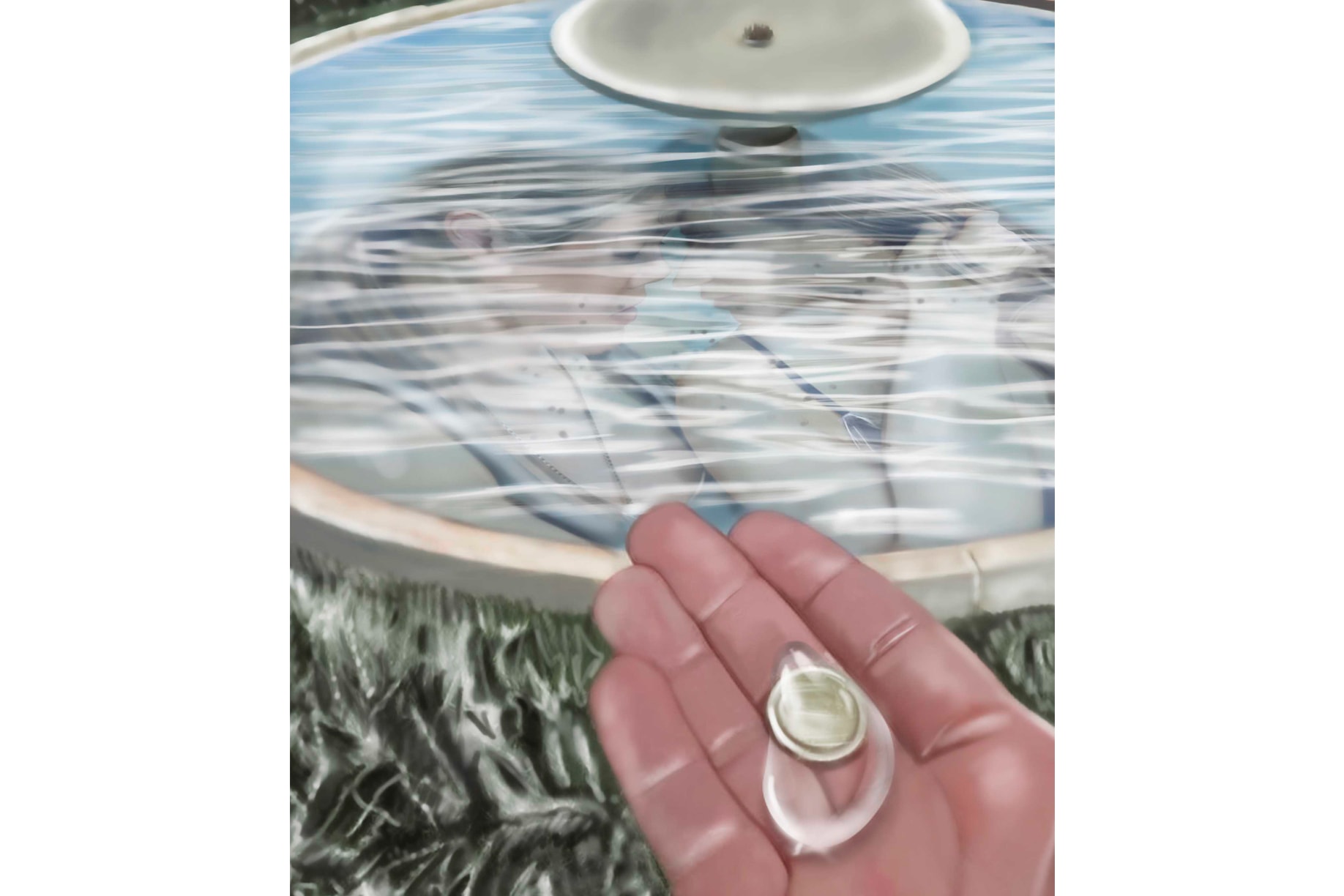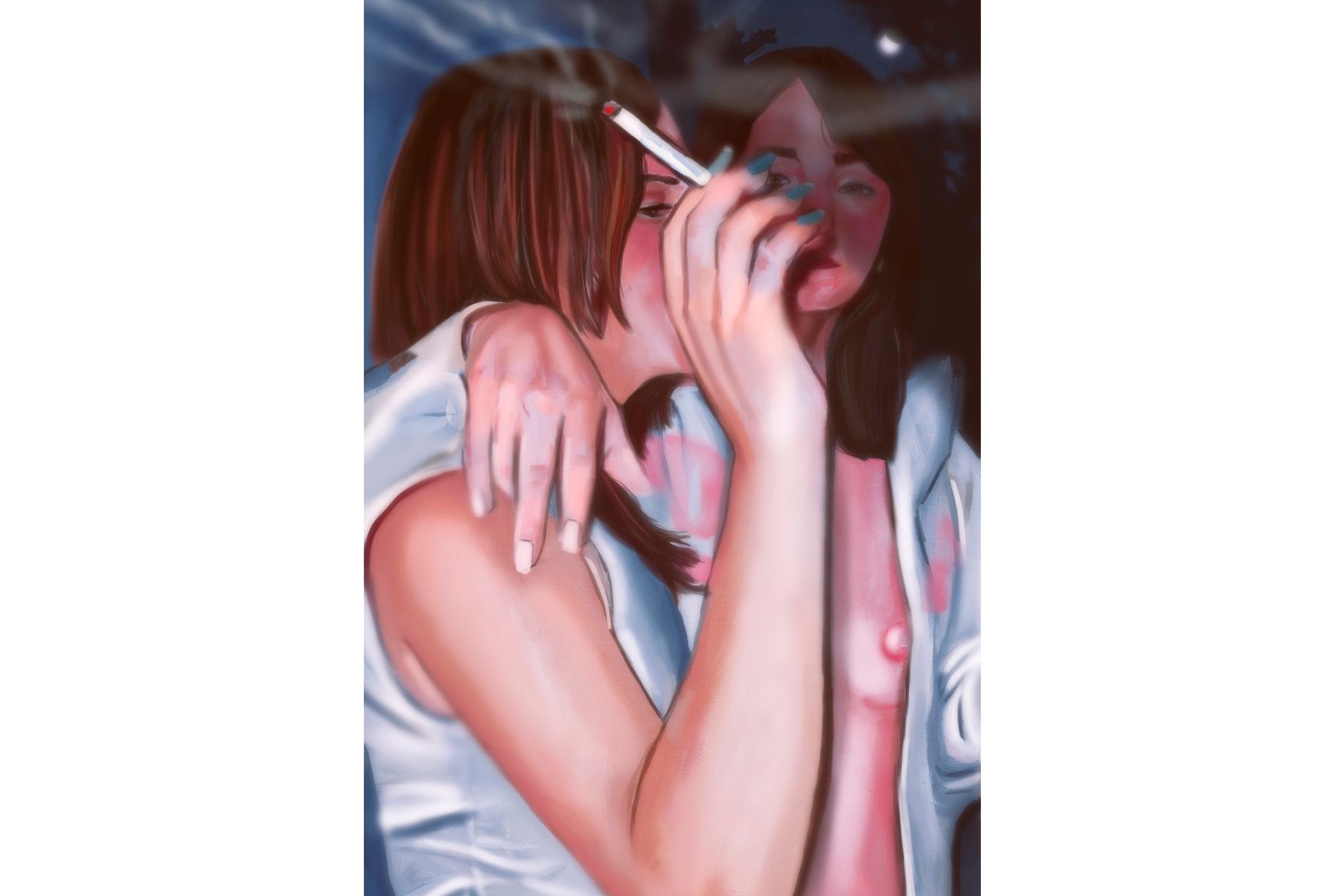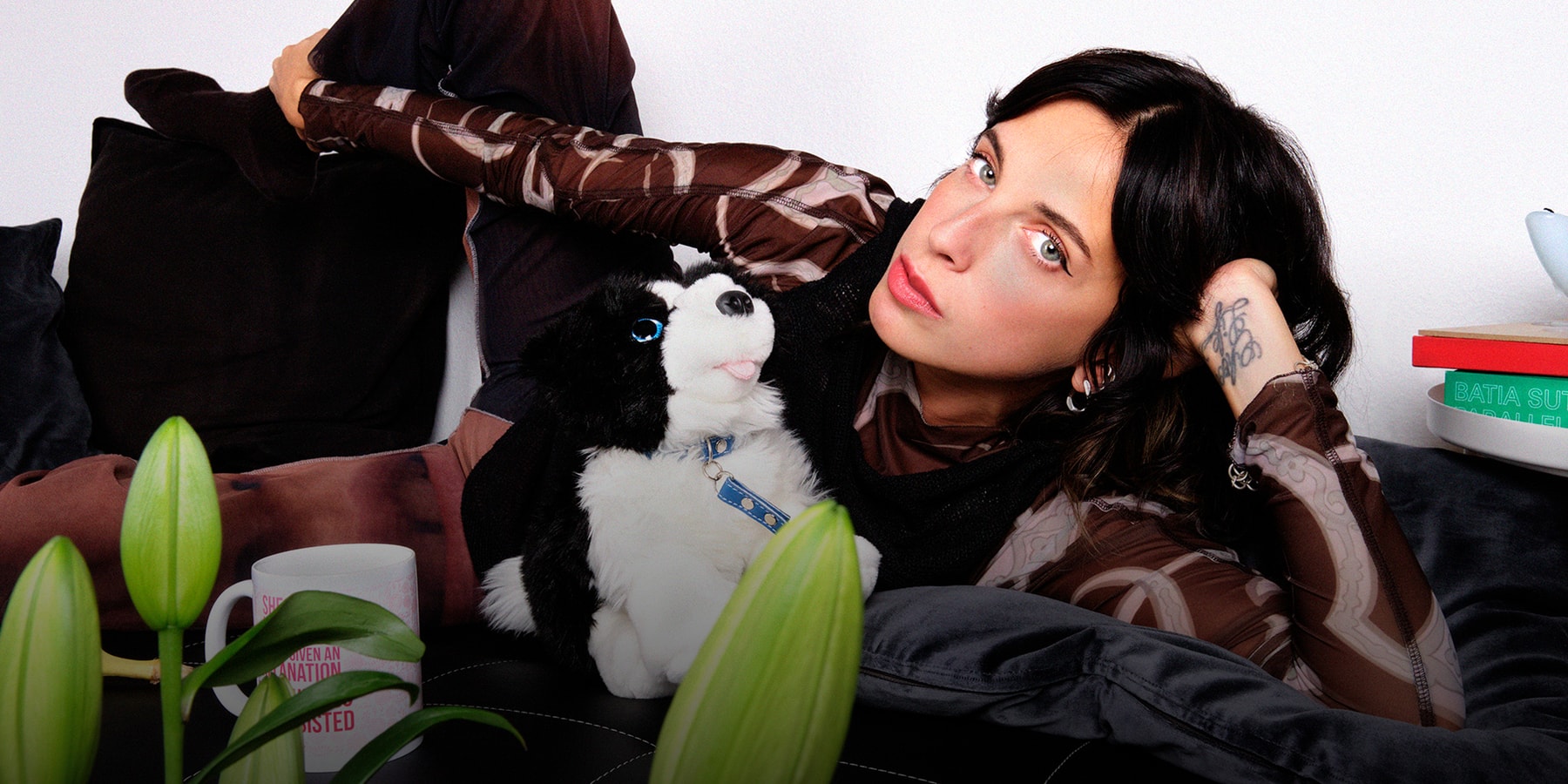

Rarely is the life of an artist clear-cut. Jumping from one craft to the next, art-making is expensive, soul-crushing and above all else, requires patience and perseverance. It’s understandable then, that many give up along the way.
Inés Maestre is a Spanish artist and illustrator who reminds you that skipping from point a to e, back down to c and forward again is not only ok, but part of the experience of developing your own mark.
Bouncing from Madrid to London to Lausanne, Inés had her ‘aha moment’ while working in fashion, a dream role for many, but one she saw as limiting to her overall aspirations as an artist.
“I was always trying to do creative stuff inside my role. I felt very limited and didn’t want to spend the rest of my life doing this work — from 8am to 6pm,” she told HYPEBEAST.
Primarily working across painting, illustrations and installations, Inés has an impressive portfolio that includes client work for publications such as Vogue, Esquire, i-D and Harper’s Bazaar, amongst many. Within each, the artist creates dreamlike scenes that contemplate the intangible facets of life — from inner feelings of desire to sexuality and the human touch. As the pandemic largely inhibited much of these topics, her interest in the subject matter became all the more heightened over the past few years.
Like many artists, Inés tries to detach her own life from her work. Inevitably, her memories, hopes, fears and desires manifest through the paintings, such as the longing for a good house party or the intimacy of touch — moments that were taken for granted for much of us pre-pandemic.
At the core of Inés’ practice is an investigation between the concept of love and desire, emphasizing “the feeling and the price we have to pay when the object we desire may not be the best for us, even if it satisfies our appetite,” she said in a past interview with It’s Nice That.
Despite appearing in some distant memory, Inés’ work is firmly grounded in the present by depicting scenes and iconography from contemporary culture.
In true pandemic fashion, I hopped on a Zoom call to chat with Inés for our latest Studio Visits to discuss her practice and what she learned during confinement.
“I found the strength and energy to create.”
What were your earliest memories of art?
I actually studied fashion design before, but I was always painting since I was a child. My family always pushed me to work, so I was always doing art on Sunday as a hobby.
It was hard for me to realize that I could make a living out of it and dedicate my life to it. For me, this option didn’t exist when I was in my early 20s.
After fashion, I started to get commissions with magazines to do illustrations and paintings. From there, I would get proposals to do exhibitions — which at the time, I was living in London and started meeting people who were doing the same thing. So it was a kind of revelation to me. So I told myself, ‘I’m going to quit fashion and start working on this.’
Over the years, I was juggling trying to develop my practice, while taking on client work. Last year, I also finished my masters degree in fine art.
Along the way, were there any artists, designers, musicians or movements in particular that inspired you along the way.
One of my biggest inspirations is music — I always feel it when I work. I want to paint in the same way as a songwriter writes a song. I’ve always just felt very linked with music in general. My taste is everywhere and sometimes my pieces can have a song from David Bowie, but also a portrait of say Bad Bunny.
I think my practice is linked to pop culture in that way — representing the present moment.
Also on fashion, I read that you became unhappy with it. Can you recall what specifically turned you fully to art?
I was always trying to do creative stuff inside my role. I felt very limited and didn’t want to spend the rest of my life doing this work — from 8am to 6pm.
As previously mentioned, whenever I finished work, I went home and started painting. Sometimes from 7pm to 1am. Of course it was exhausting to do this, but at that moment I found the strength — because I was so tired and felt like I really need to feel ‘realized’ in my life somehow. I found the strength and energy to create.
“I try to represent what is not visible.”
Now that you’re based between Madrid and Lausanne, can you talk on the differences in culture and how you get inspiration from both?
I feel a bit tired of Lausanne. Switzerland is an amazing place and very beautiful, but in my opinion, in Lausanne, I find it a bit boring now compared to big cities like London or Madrid.
You can have a nice life here without many distractions, but I like to have plans everyday to go to openings or see people — this kind of ‘fast life’ that you have in big cities and of course in my culture, being from Spain — which is the total opposite. I’ve lived here for almost three years and I still don’t understand the dinner times or what is considered the afternoon haha.
What are some of the themes you explore within your work?
I try to represent what is not visible. The things that are not tangible — the things that you cannot touch or see — the feelings and emotions. I have this need to start creating from there.
Last year, I was working on topics related to love, relationships, sexual desire and to my personal experiences — even if I try to step back, I realize it’s impossible. I’m always very present in the pieces that I make.
How would you describe the differences between love and desire?
Desire is something that you can have for someone, but it can disappear in the moment that you fulfill it. Once you attain it, it can be gone, because it only operates in this first layer. Whereas, love can last much longer and may not be as passionate, let’s say, but lasts much longer and can be felt through the relationship.
“It’s important for us to always ask the question of why things are the way they are.”
We’re constantly sold through ads, media and films about love, desire and sexuality. Pivoting to the adult industry, which your art comments on — in America, there is a taboo connotation to the adult industry. Why do you think that is and what might need to change for there to be more understanding within topics such as sexuality?
Sexuality is a huge topic and I think something we’ve been talking about for a long time. It’s still taboo because of the way our societies are structured. Of course, it depends on your culture, but sexuality can be linked to intimacy. But I think it’s also good to talk about it and how our sexuality is based in certain roles. I did a project about porn and about how it was taboo to talk about it — and it’s not good to generalize — but a lot of people were confused when talking about porn.
There are a lot of artists who work with this idea of trying to create another type of porn that is not so based in male pleasure or sex or desire.
It’s important for us to always ask the question of why things are the way they are.
“I was painting everyday and needed to represent the human warmth that I was lacking in that moment.”
A lot of dating in general was forbidden during the pandemic, due to strict lockdowns. Can you recount your own experiences and what you learned throughout?
Yeah dating life was hard for me in that moment because I broke up with my partner at the beginning of the pandemic. I was in the middle of completing my masters degree, so everything was so surreal and weird. But for me, it was an awakening in some ways. I was painting everyday and needed to represent the human warmth that I was lacking in that moment.
A lot of us felt that because we couldn’t see anyone. The feeling of touching or the warmth you feel in a party — I started depicting a lot of these scenes from a party.
Then it was really hard, because after a few months I really wanted to start meeting and dating people again — but it was impossible. You had to have dates in your own place through dating apps, because it was hard to meet people at the supermarket haha.
Your options were: either go on a walk or invite them to your place or go to theirs, which is uncomfortable on a first date.
Going into your process, what kind of paints and materials do you normally use and how do you go from idea to execution?
I’m always painting in different techniques, but digital and oil painting is very present in my work. I also have some pieces where I scan the pictures and collage, which I paint over, print, then paint over the prints. I work in this layering technique — but it’s all relative to the piece.
Lately, I’ve been doing collaborations with my friend Sara Bastai, who is a photographer. We found a good combo where she takes the picture and I work from the image and create something in a new environment.
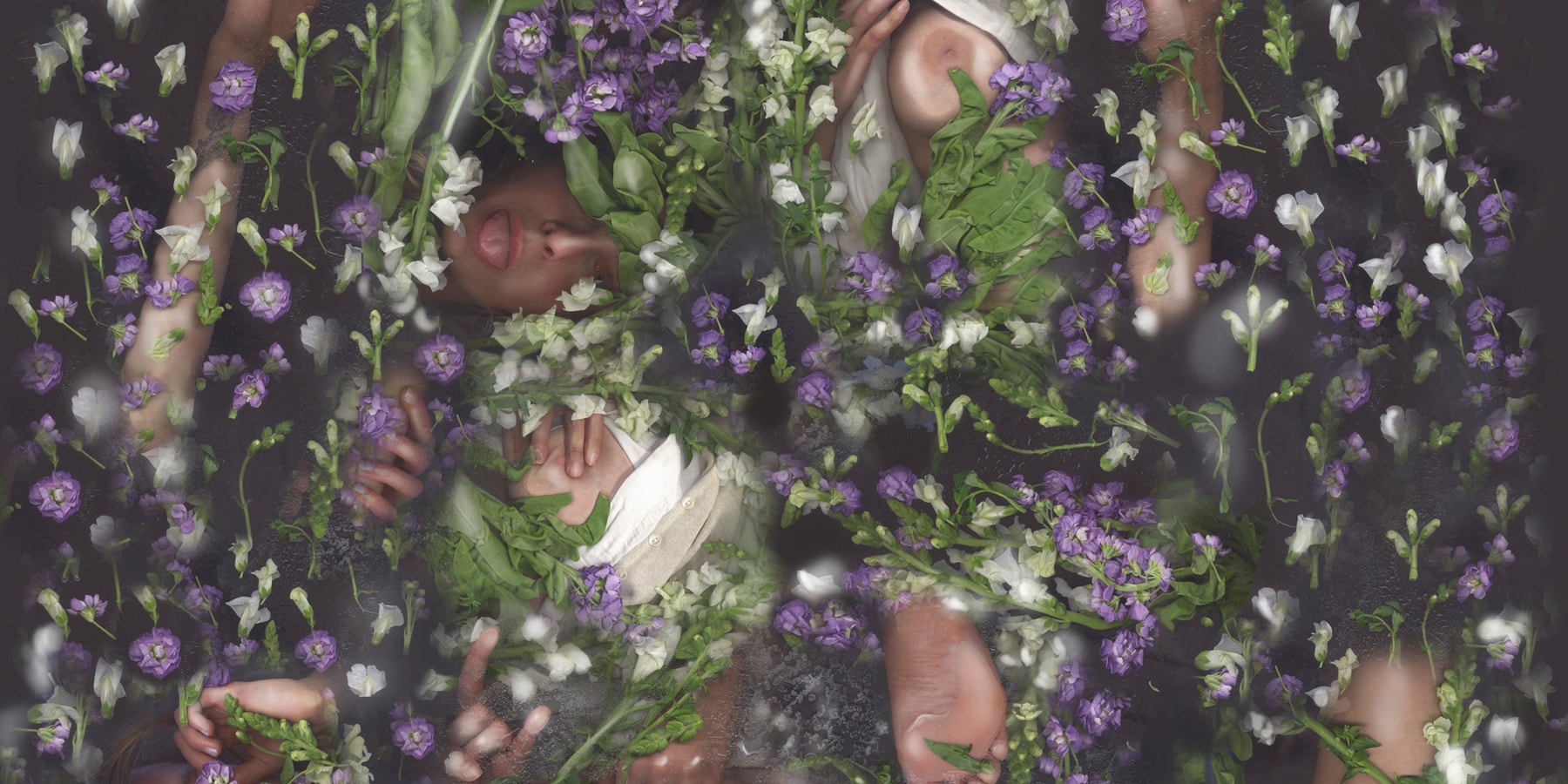
Inés Maestre may have gone into the pandemic searching for answers, but she emerged out of it as an artist that should be on your radar. Having recently held an exhibition in Bergamo, Italy, the Spanish artist will hold another in Geneva next month, along with a host of other projects. With a client list like hers, who knows, maybe she might dip her toes back into fashion as well.

